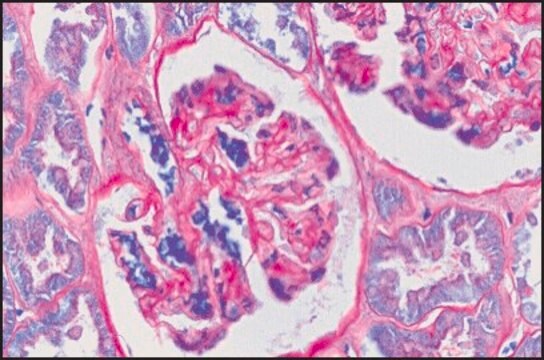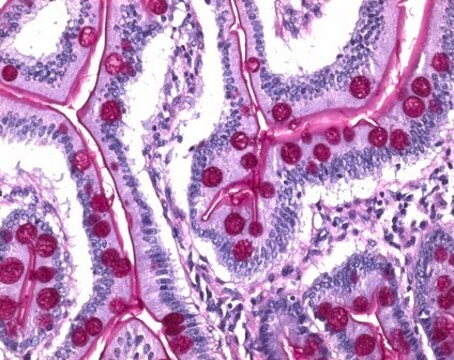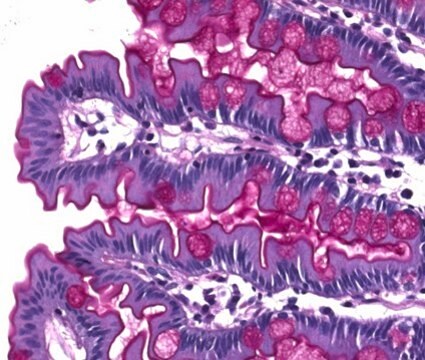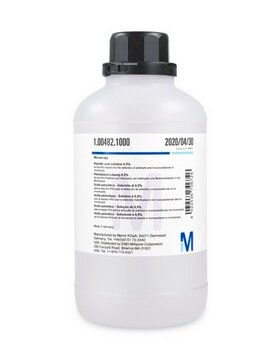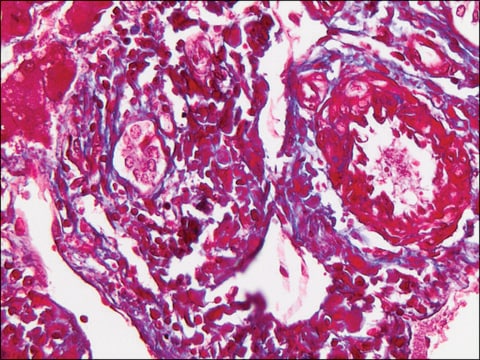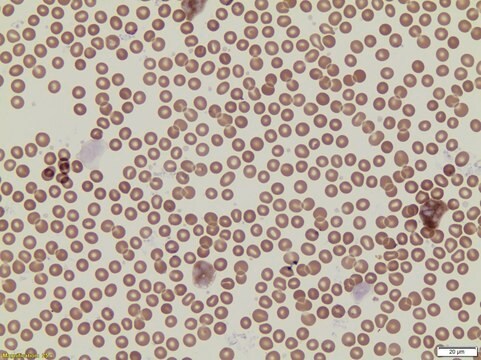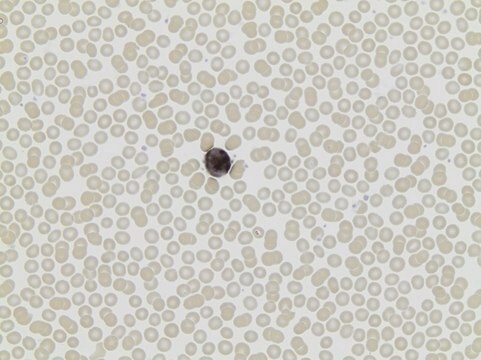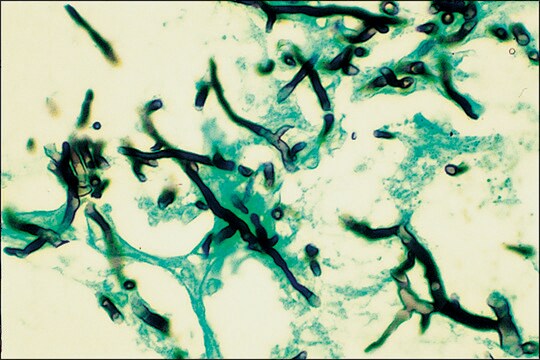Recommended Products
shelf life
Expiry date on the label.
Quality Level
IVD
for in vitro diagnostic use
application(s)
hematology
histology
shipped in
wet ice
storage temp.
2-8°C
Application
Standard procedure and microwave procedure included in package insert.
When treated with periodic acid, glycols are oxidized to aldehydes. After reaction with Schiff′s Reagent (a mixture of pararosaniline and sodium metabisulfite), a pararosaniline adduct is released that stains the glycol-containing cellular elements pink to red. Cellular elements which may be demonstrated with the PAS procedure include glycogen, fungal walls, basement membrane, certain epithelial sulfomucins and sialomucins, neutral mucosubstances, colloid material of the thyroid and the pars intermedia of the pituitary.
Kit Components Only
Product No.
Description
- Hematoxylin Solution, Gill No. 3 (kit only) 100 mL
- Periodic Acid Solution (395-1) 2 x 100
- Schiff's Reagent (kit only) 4 x 50
related product
Product No.
Description
Pricing
signalword
Danger
Hazard Classifications
Acute Tox. 4 Oral - Aquatic Chronic 3 - Carc. 1B - Eye Dam. 1 - Met. Corr. 1 - Skin Corr. 1 - STOT RE 2 Oral
target_organs
Kidney
Storage Class
6.1C - Combustible acute toxic Cat.3 / toxic compounds or compounds which causing chronic effects
wgk_germany
WGK 3
Choose from one of the most recent versions:
Already Own This Product?
Find documentation for the products that you have recently purchased in the Document Library.
Customers Also Viewed
Angela C Nolin et al.
American journal of physiology. Renal physiology, 311(6), F1271-F1279 (2016-09-02)
Proteinuria is a major risk factor for chronic kidney disease progression. Furthermore, exposure of proximal tubular epithelial cells to excess albumin promotes tubular atrophy and fibrosis, key predictors of progressive organ dysfunction. However, the link between proteinuria and tubular damage
Nicolas Broguiere et al.
Advanced materials (Deerfield Beach, Fla.), 30(43), e1801621-e1801621 (2018-09-12)
Epithelial organoids are simplified models of organs grown in vitro from embryonic and adult stem cells. They are widely used to study organ development and disease, and enable drug screening in patient-derived primary tissues. Current protocols, however, rely on animal-
Ming Jiang et al.
Nature, 550(7677), 529-533 (2017-10-12)
In several organ systems, the transitional zone between different types of epithelium is a hotspot for pre-neoplastic metaplasia and malignancy, but the cells of origin for these metaplastic epithelia and subsequent malignancies remain unknown. In the case of Barrett's oesophagus
Roshane Francis et al.
Science advances, 5(12), eaax8898-eaax8898 (2019-12-18)
Transcription factors (TFs) are spatially and temporally regulated during gut organ specification. Although accumulating evidence shows aberrant reactivation of developmental programs in cancer, little is known about how TFs drive lineage specification in development and cancer. We first defined gastrointestinal
Satish Patel et al.
PloS one, 6(1), e15845-e15845 (2011-01-22)
Over-activity and elevated expression of glycogen synthase kinase-3 (GSK-3) has been implicated in the etiology of insulin resistance and Type 2 diabetes. Administration of specific GSK-3 inhibitors to diabetic or obese rodent models improves glycaemic control and insulin sensitivity. However
Articles
Fungal stains remain an important tool in the histology laboratory's diagnostic arsenal for identifying infectious microorganisms.
Our team of scientists has experience in all areas of research including Life Science, Material Science, Chemical Synthesis, Chromatography, Analytical and many others.
Contact Technical Service